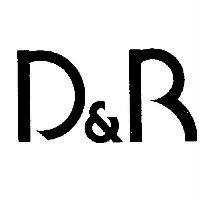Is trademark "D&R" similar to trademarks "DIOR" and "廸奧"? The 2016 Taiwan Supreme Administrative Court Decision
Date: 1 June, 2017
【Volume 4】
On 7th December, 2010, the Taiwan Intellectual Property Office (IPO) approved the trademark registration of “D & R” trademark (“the subject trademark”) in Class 3. The applicant is a Taiwanese cosmetic company and the specification of goods includes cosmetics, perfumes, toilet water. A French cosmetic company filed an opposition against the subject trademark with trademarks “DIOR” (“the cited mark 1”) and “廸奧” (“the cited mark 2”), on the grounds that “D & R” violated Article 23(1)-13 of the Taiwan Trademark Act at the time of registration, “the trademark shall not be registered when it is being identical with or similar to a well-known trademark and hence exists a likelihood of confusion on the relevant public or a likelihood of dilution of the distinctiveness or reputation of the said mark”.
After the IPO handed a decision to reject the opposition, the Opposer appealed the opposition decision to the Appeal Committee. The Appeal Committee also rejected the appeal. The Opposer then appealed to the Intellectual Property Court. The Court overturned the decisions by the IPO and Appeal Committee, and the Taiwan Supreme Administrative Court also upheld the ruling. At the end, the publication of “D & R” trademark was revoked.
| The Subject Trademark (Reg. No.: 1469879) | The Cited Mark 1 (Reg. No.: 00161930) | The Cited Mark 2 (Reg. No.: 00161928) |
|---|---|---|
 |
 |
.png) (Prononced as “dee-AW”) |
| Class 3: Cosmetics; Toilet water; Cleansing cream; Tinted Moisturizer; Perfumes etc. | Class 6: Cosmetics including perfumes, rouge and powder, beauty cream, and talcum powder. | Class 6: Perfumes; Rouge and powder; Beauty cream. |
The key to the trademark case is whether the subject trademark “D&R” is similar with the cited marks “DIOR” and “迪奧”.
Opinions of the IPO and the Appeal Committee
- Consumers should be able to distinguish the subject trademark and the cited mark 1 “DIOR” based on their prononciations. Also, “D & R” is composed of 2 alphabets and a symbol whereas “DIOR” is composed of 4 alphabets. Since their appearances and impressions given to the consumers are apparently different, they have low similarities.
- Also, appearances of the subject trademark and the cited mark 2 “迪奧” give different impressions to the consumers and their pronunciations are not similar. Ordinary consumers should be able to distinguish the trademarks by speaking their names out loud or by paying attention when buying the products. The two trademarks have low similarities as the possibilities that the buying public misidentify the goods of the two trademarks are originated from the same or closely related source are low.
Options of the Intellectual Property Court and the Taiwan Supreme Administrative Court
- By comparing the subject trademark “D & R” and the cited mark 1 “DIOR”, the first and the last letters are both “D” and “R”, only the alphabets “IO” and symbols “&” between “D” and “R” are different. Considering that the two trademarks are not familiar foreign words to Taiwanese citizens and the first and last letters of the trademarks are the same, consumers with general knowledge may mix up two trademarks and lead to a likelihood of confusion.
- From the perspective of pronunciation, buying public with general knowledge could pronounce the cited mark “DIOR” altogether as “DIOR” (dee-awr), or separately as “D-I-O-R” (dee-ahy-oh-ahr). For the subject trademark “D&R”, it can be pronounced as “D-and-R”. Although their pronunciations are slightly different, pronouncing “D-I-O-R” separately sounds similar to “D-and-R”. Even though “DIOR” is a well-known trademark and consumers rarely pronounce the word separately, “D-and-R” sounds similar to another cited mark “迪奧” (dee-AW). By comparing the appearances, concepts and pronunciations of the subject trademark “D&R” and the cited marks “DIOR” and “迪奧”, they are regarded as similar trademarks.
Wisdom’s Commentary and Suggested Strategies
According to the IPO’s “Examination Guidelines on Likelihood of Confusion”, similarities of trademarks shall be judged by considering and observing the overall appearances, concepts or pronunciations of the trademark’s goods/ services given to the consumers of goods/services. Taiwan have always adopted strict “overall observation theory” practically. As seen in this trademark case, the IPO and the Appeal Committee followed this rule strictly.
However, the Intellectual Property Court and the Taiwan Supreme Administrative Court exceptionally adopted loose “overall observation theory”, and this trend is worth noting. In order to obtain the trademark rights successfully, we suggest the trademark applicant should notice this trend, plan ahead and expand the searching criteria when conducting trademark searches before filing.






